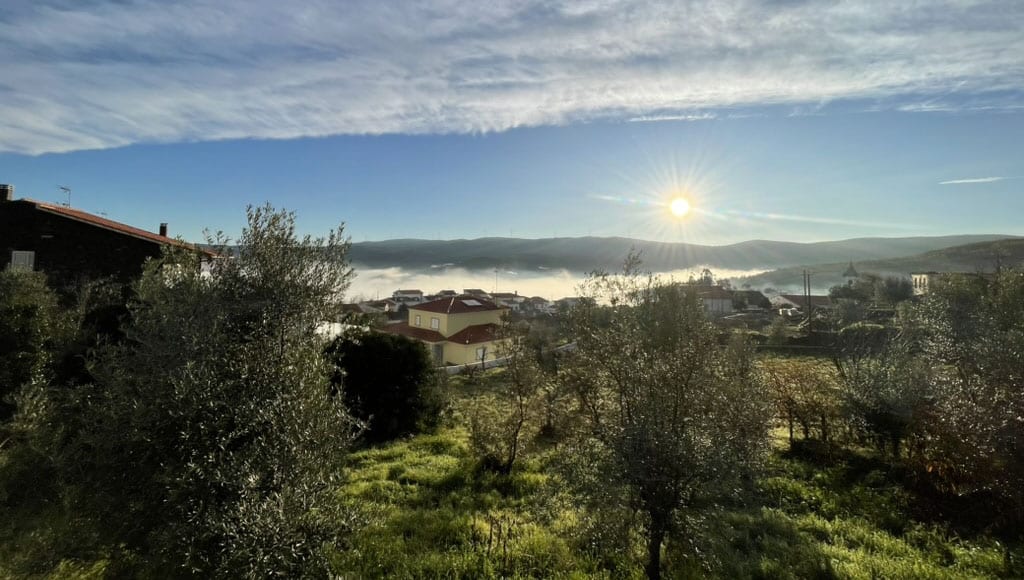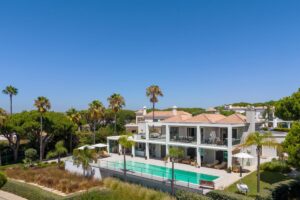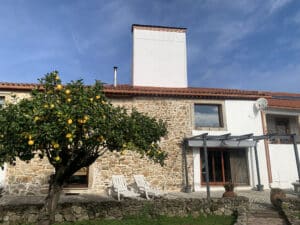I spend time talking to people wanting to move to Portugal, looking at the Algarve and its undeniably sunny weather, or opting for a home in the Central Region of Portugal where property prices are lower, life is quieter and the sun also shines.
The reason the Algarve is such a popular destination is that it is one of the warmest places in Europe during the winter and its summer is almost constant sunshine with very little rain to spoil the holidays. However, this lack of rain is becoming a problem.
Portugal’s Central Region also experiences a Mediterranean climate but with pronounced seasonal variations in temperature and rainfall, i.e., hotter summers and cooler, wetter winters than in the south. The popular central coastal zone, the ‘Silver Coast’, stays milder, but inland areas can heat up significantly, especially as you venture east, closer to the Spanish border.

Another key comparison between the two regions is people, or lack of. The Central Region certainly has its tourist hotspots, including Tomar, Aveiro, Fátima and Coimbra, but with a low population density, the experience of space and freedom is in sharp contrast to the crowded roads and facilities of the Algarve. The region is six times the area of the Algarve, which is only 155 kilometres wide and valiantly caters for 4-5 million tourists per year on top of its resident population.
As for the question of language, Portugal has always ranked well in the worldwide EF English Proficiency Index, and currently holds eighth place, showing that a high percentage of Portuguese can speak basic English or better.
Many Algarve locals speak English, a result of decades of catering for English-speaking tourists and incoming residents.
In the Central Region, communication in tourist towns and cities is easy for non-Portuguese speakers but less so in the interior’s villages where it’s best to have a basic grasp of some common phrases.

Many municipalities and parish councils offer free Portuguese language courses. These, combined with neighbours willing to chatter, help the learning process which can be fun as well as rewarding.
The main north-south question raised is that of property prices. The Algarve continues to build more and more luxury properties, estates, resorts and entire new tourist villages. Despite this increase in supply, property prices continue to rise and now are unaffordable for Algarve locals and for many incomers who no longer can afford that sea and sun lifestyle that remains at the core of the region’s highly effective marketing.
To compare two seaside areas, Carvoeiro in the Algarve and Figueira da Foz on the Central Region’s west coast, apartments in Carvoeiro range from €4,000 to €8,000 per m2 compared to those in Figueira da Foz which range between €1,000 and €3,000.
A look at idealista.pt shows detached houses in Figueira da Foz average €1,625 per m2 compared to €5,935 per m2 in Carvoeiro.
In Olhão, to the east of Faro, 3-4-bedroom homes cost an average of €3,228 per m2, compared to the old centre of coastal Figueira da Foz where they average €1,785 per m2. Further inland in Pombal, Pedrógão Grande, Figueiró dos Vinhos and the new boom town of Sertã, prices are even more attractive.
It is always tricky to make direct property comparisons but the overall north-south pricing differential is plain to see.
Many overseas buyers looking for 3-4-bedroom retirement properties, open plan, centrally heated, air-conditioned, have been baulking at the asking prices in Lisbon and in the Algarve and now are looking at what their money can buy in the centre of the country.
There is still a shortage of fully upgraded Central Region properties, but companies such as Rural Properties and individual developers are working fast to fill an increasing demand from increasingly demanding overseas buyers who require quality properties at sensible prices. Turning beautiful old and historic buildings into comfortable, heated, cooled and professionally redesigned homes takes knowledge, expertise, labour and love, but such properties now are coming onto the market and quickly finding willing buyers.
Another frequent north-south question is water security. The Central Region has no water issues. The sources of the Mondego and the Zêzere rivers are in Portugal’s mountains and both remain 100% under Portuguese control. Water is sensibly managed between domestic and agriculture and its supply systems maintained.
In the Algarve, years of water mismanagement and an ever-increasing demand are leading to an acute situation which will not be resolved unless politicians and the regional water company take the necessary, expensive steps.
In terms of the economy, the Central Region contains some of the most economically active municipalities of the country with healthcare, biotechnology, manufacturing, Dão and Bairrada wine, forestry, paper, agriculture and fishing industries as well as a growing tourism sector.
This regional economy, based on a range of industries rather than being reliant solely on tourism and immigration, is resilient and healthy, attracting new businesses as well as new residents who value the authenticity, space, culture and connectivity while quietly appreciating the significant property price differential.
Central Region’s average daytime temperatures:
Winter: 8°C to 15°C though it can drop near or below freezing in mountain areas.
Spring: 15°C to 22°C
Summer: 25°C to 30°C, while some inland areas exceed 35°C+.
Autumn: 20°C to 28°C in September. 12°C to 18°C in November.
Algarve average daytime temperatures:
Winter: 15°C to 18°C.
Spring: 18°C to 23°C by May.
Summer: 28°C to 34°C and often far hotter inland.
Autumn: September 26°C to 30°C. November 18°C to 21°C.
By Paul Rees
The author runs Rural Properties, an innovative business that invests in the Central Region, buying, renovating and selling properties. For investment enquiries: www.rural-properties.com or contact info@rural-properties.com
























